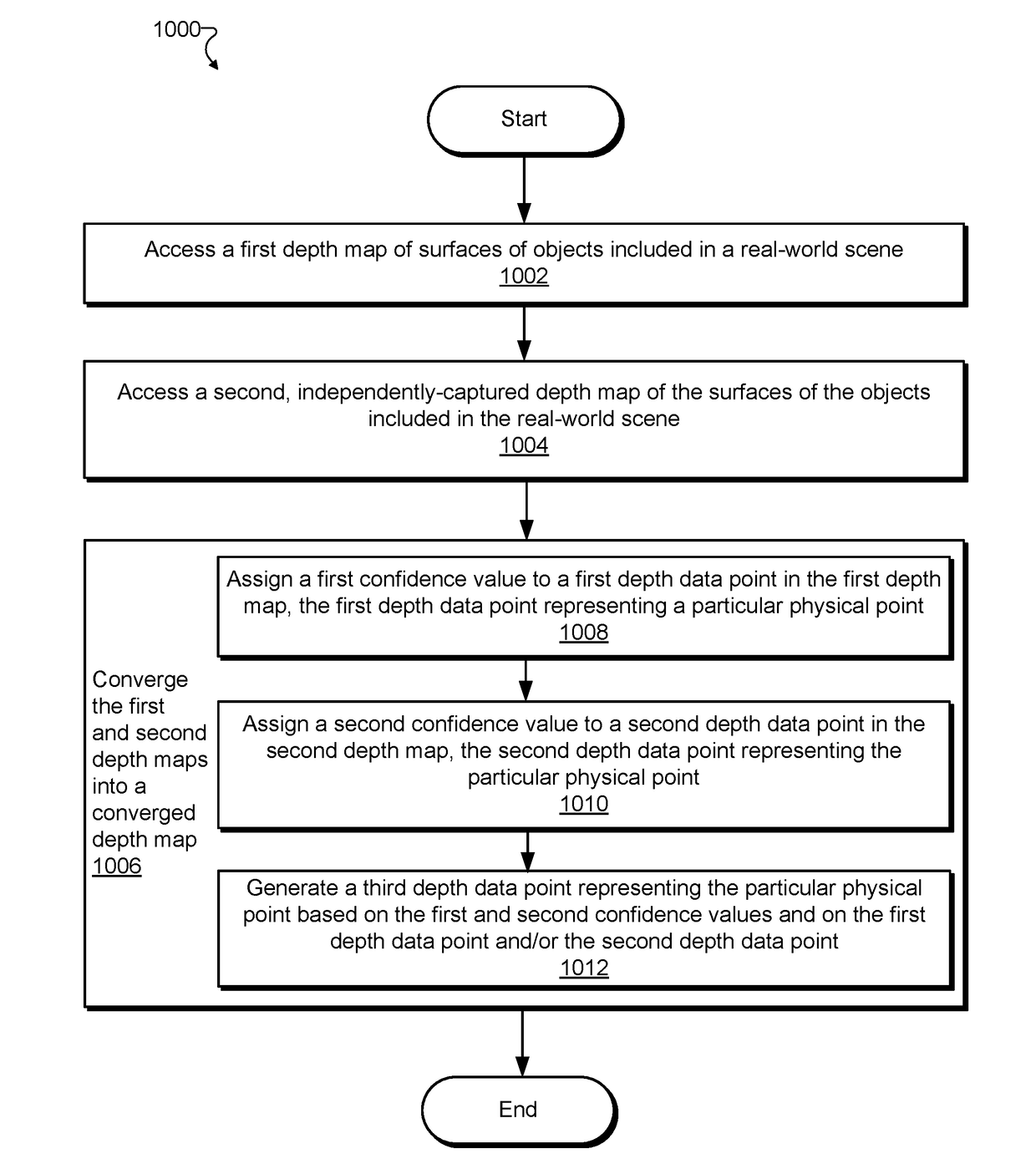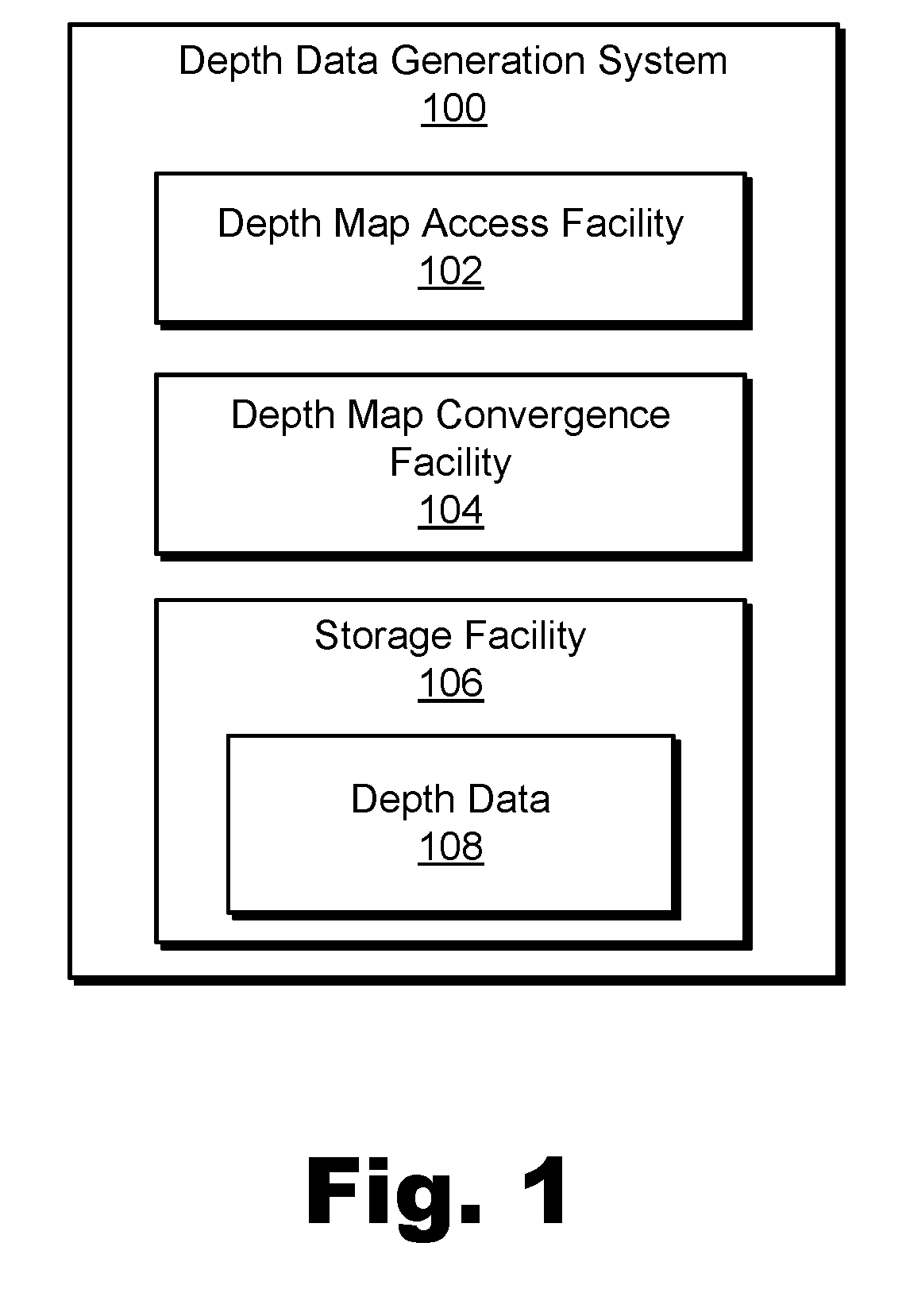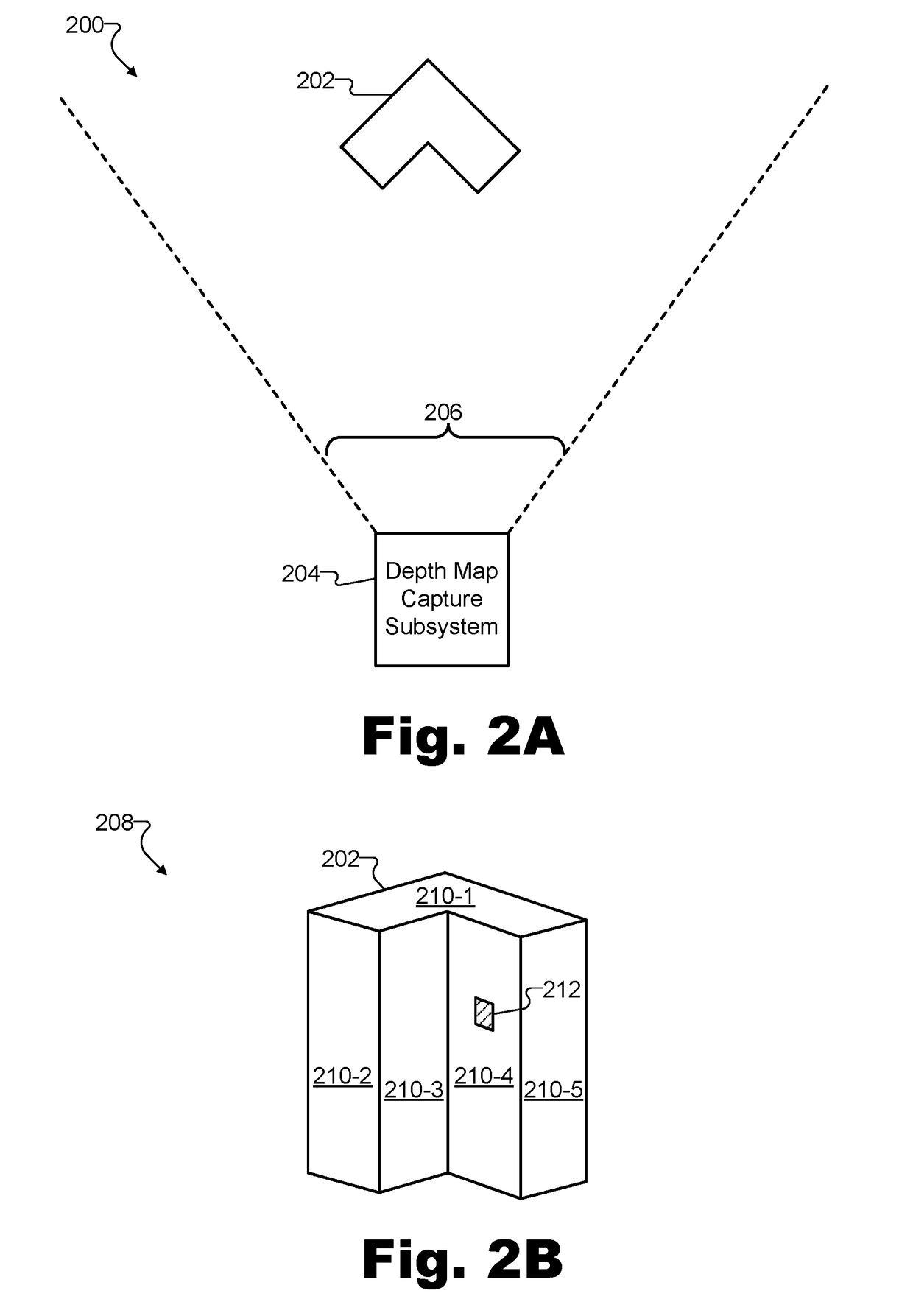Methods and Systems for Generating Depth Data by Converging Independently-Captured Depth Maps
a technology of depth data and independent capture, applied in the field of methods and systems for generating depth data by converging independently captured depth maps, can solve the problems of depth data captured, inability to accurately capture objects in real-world scenes, and inability to improve,
- Summary
- Abstract
- Description
- Claims
- Application Information
AI Technical Summary
Benefits of technology
Problems solved by technology
Method used
Image
Examples
Embodiment Construction
[0017]Methods and systems for generating depth data by converging independently-captured depth maps are described herein. As used herein, “depth data” may broadly include any spatial location data, positional coordinate data, or other data representative of a position of one or more surfaces (e.g., or, more particularly, one or more physical points on the surfaces) of one or more objects in three-dimensional (“3D”) space. For example, as will be described and illustrated below, depth data may include data representative of surfaces of objects included in a real-world scene. Depth data may be captured in various ways and / or by way of various techniques including by methods and systems described herein. In certain examples, depth data may be combined and / or synchronized with video data (e.g., two-dimensional (“2D”) video data) to generate a dynamic volumetric model of the surfaces of objects that incorporates the depth data and the video data over a period of time. Such volumetric mod...
PUM
 Login to View More
Login to View More Abstract
Description
Claims
Application Information
 Login to View More
Login to View More - R&D
- Intellectual Property
- Life Sciences
- Materials
- Tech Scout
- Unparalleled Data Quality
- Higher Quality Content
- 60% Fewer Hallucinations
Browse by: Latest US Patents, China's latest patents, Technical Efficacy Thesaurus, Application Domain, Technology Topic, Popular Technical Reports.
© 2025 PatSnap. All rights reserved.Legal|Privacy policy|Modern Slavery Act Transparency Statement|Sitemap|About US| Contact US: help@patsnap.com



